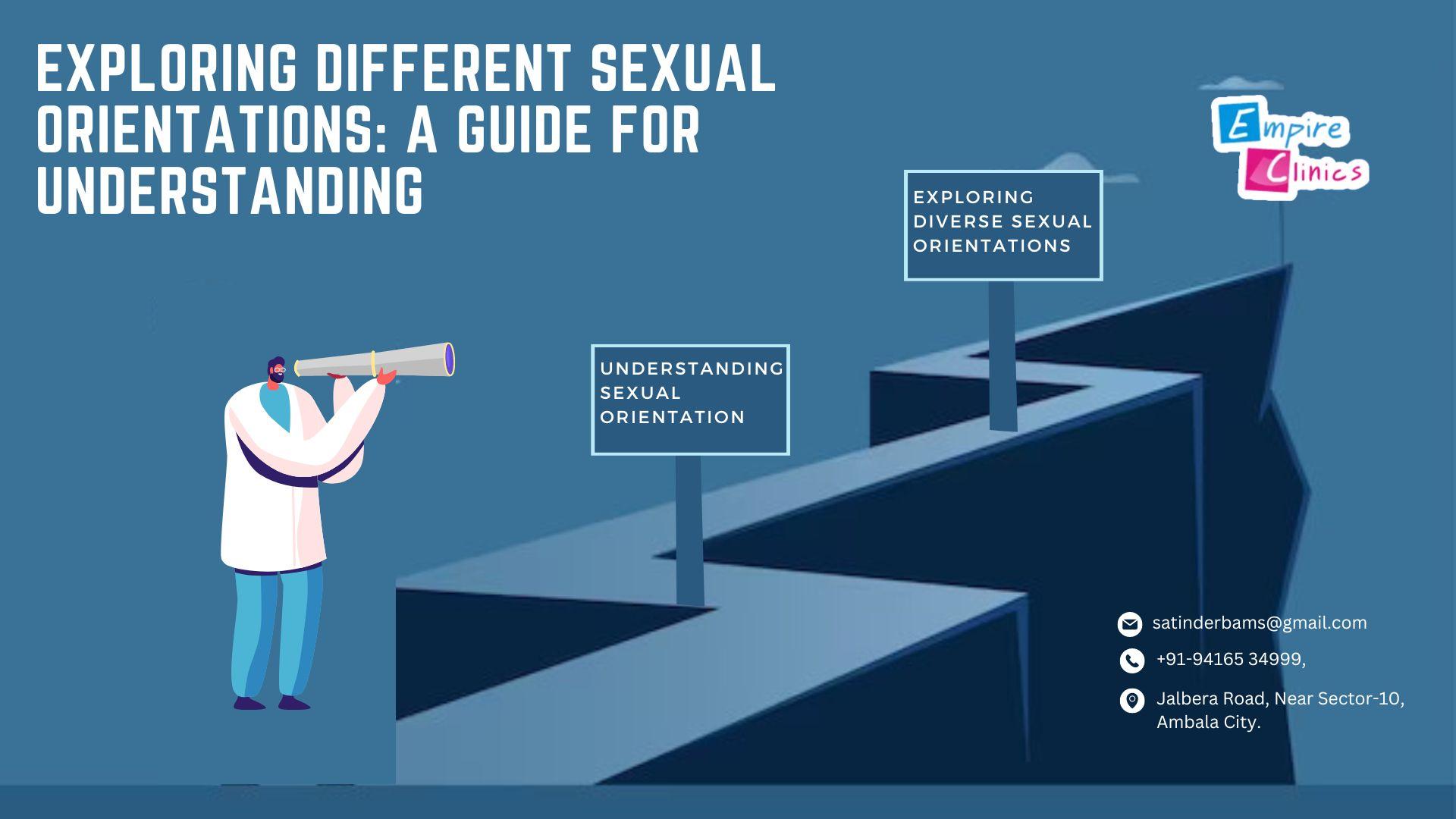Sexual orientation is a fundamental aspect of human identity that encompasses the range of individuals' romantic, emotional, and sexual attractions. While heterosexuality is the most commonly known orientation, it is essential to recognize and understand the diverse spectrum of sexual orientations that exist. This guide aims to shed light on the various sexual orientations beyond the heterosexual norm, fostering understanding and promoting inclusivity. By exploring these diverse orientations, we can embrace diversity, challenge stereotypes, and create a more inclusive and accepting society.
Understanding Sexual Orientation :
Sexual orientation refers to an individual's enduring pattern of attraction to others. It exists on a continuum, ranging from exclusive attraction to the opposite gender (heterosexuality) to exclusive attraction to the same gender (homosexuality), with many variations in between. Some common sexual orientations include:
1. Heterosexuality: Individuals who are primarily attracted to others of the opposite gender.
2. Bisexuality: Individuals who are attracted to both males and females.
3. Pansexuality: Individuals who are attracted to others regardless of gender identity.
4. Asexuality: Individuals who experience little or no sexual attraction to others.
5. Demisexuality: Individuals who only experience sexual attraction after forming a strong emotional bond.
Exploring Diverse Sexual Orientations :
Beyond these commonly recognized orientations, it is important to acknowledge the existence of numerous other sexual orientations that may be less well-known but equally valid. Some of these include:
1. Polysexuality: Individuals who are attracted to multiple genders but not necessarily all genders.
2. Queer : An umbrella term for individuals who identify outside of traditional sexual orientation categories or who feel their sexual orientation is fluid and evolving.
3. Graysexuality: Individuals who experience a limited or fluctuating sexual attraction.
4. Skoliosexuality: Attraction to individuals who do not strictly conform to traditional gender identities, such as non-binary or genderqueer individuals.
5. Androgyny: Attraction to individuals who possess both masculine and feminine traits or whose gender identity is ambiguous.
6. Sapiosexuality: Attraction based on intelligence or intellectual connection rather than gender.
Understanding and Embracing Diversity :
To create a more inclusive and understanding society, it is crucial to educate ourselves about different sexual orientations and challenge societal biases and stereotypes. Recognizing that sexual orientation is a deeply personal and intrinsic aspect of an individual's identity helps dispel misconceptions and promote empathy.
It is important to respect and validate each person's self-identified sexual orientation, using appropriate language and avoiding assumptions or stereotypes. Educating ourselves about different orientations, listening to personal stories, and engaging in respectful conversations can promote greater understanding and empathy.
Conclusion :
Understanding and embracing different sexual orientations is a vital step towards building a more inclusive and accepting society. By acknowledging the diversity of human experiences, we can break down barriers and foster empathy and respect. It is essential to challenge our own biases, educate ourselves, and engage in open and respectful dialogue. Embracing different sexual orientations benefits us all, creating a society where everyone can live authentically and without fear of judgment or discrimination. Let us celebrate diversity and work together to build a world that values and respects the richness of human sexuality in all its forms.







